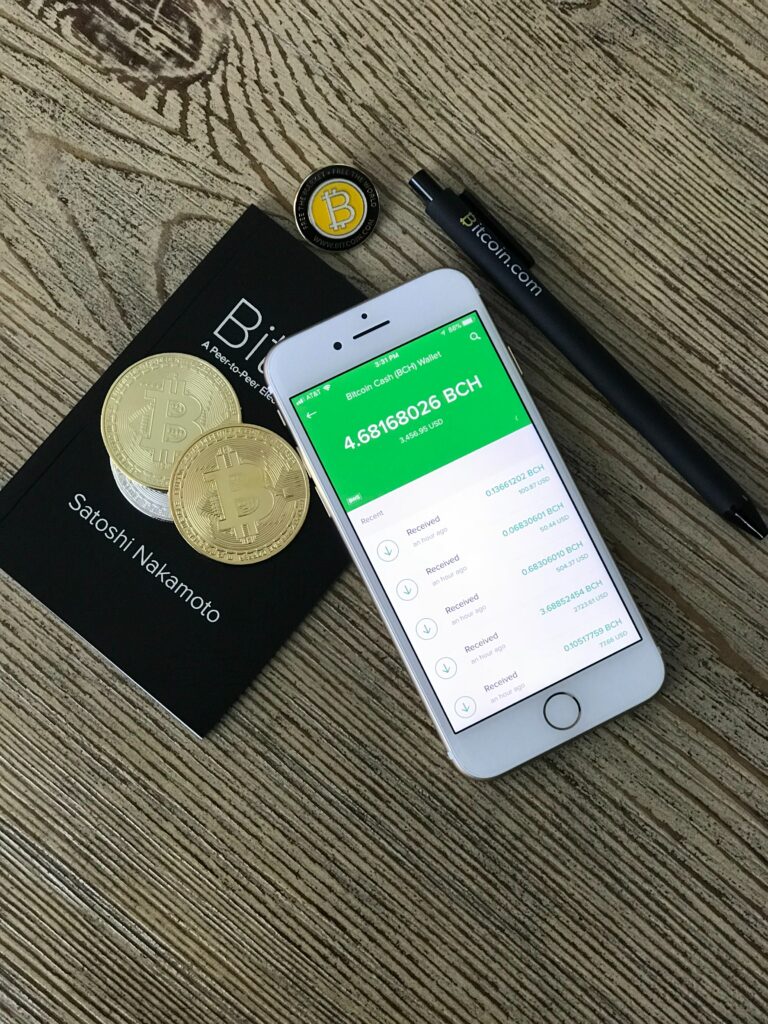
In today’s dynamic business landscape, generating leads is a crucial initial step on the path to growth.
However, the journey is far from over.
As leads trickle in, the challenge lies in transforming these prospects into opportunities and ultimately paying customers.
Welcome to the art of lead nurturing and the voyage through the conversion journey.
The Art of Lead Nurturing: Understanding the Conversion Journey
Generating leads is the first step. If you’ve already achieved this, you’re on the right path. This usually requires effort from your team and an investment in marketing channels that generate leads.
But first, let’s be clear: what is a lead? A lead is a prospect you’ve identified, meaning you know who they are and how to reach them.
But then what? Should you pass them along to your sales team? Probably not. Passing leads that aren’t warm enough to your sales team will not only waste time but also harm your precious marketing and sales relationships, as sales may find your leads uninteresting. Moreover, buyers are becoming less willing to be contacted by a sales representative. In fact, Gartner explains that when B2B buyers consider a purchase, they spend only 17% of that time meeting with potential suppliers. Being contacted by sales too early in the process could be counterproductive.
So, nurture your leads before passing them along to sales. What is lead nurturing?
According to Marketo, “Lead nurturing is the process of developing and reinforcing relationships with buyers at every stage of the sales funnel. A successful lead nurturing program focuses marketing and communication efforts on understanding prospects’ needs and providing the information and answers they need.”
Lead nurturing is your secret weapon in the journey to conversion. According to HubSpot, nurtured leads result in a 20% increase in sales opportunities compared to non-nurtured leads. You will improve your productivity, boost the morale of your reps, and, most importantly, increase your conversion rate.
The Psychology of Conversion: Understanding User Behavior
First and foremost, you need to understand the buyer’s journey. To generate leads, you dive deep into your ideal customer profile, understanding their pain points to craft messages that resonate with them and attract them to you.
Now you need to identify how they behave during the conversion process. Look at website behavior, analyze your data analytics, and talk to your customers to understand how they discover you and why they choose you. This is crucial when building your nurturing process. You need to understand the decision-making process to streamline your prospects’ ideal path.
You’ll need to manage this ongoing process as you evolve, your customers evolve, and you learn more about customer behavior. Establish a feedback loop with your BDRs and sales team to ensure you’re continually improving your nurturing machine. Also, ensure you have a robust data foundation that can provide the insights you need throughout the conversion journey to identify obstacles and streamline your path.
When you’ve identified your ideal conversion path, consider any content gaps that you might have. What information does your buyer need to progress on their journey? Which content can help facilitate that progression?
Develop an ideal consumption path to educate your prospect and aid their decision-making. Adjust your website to provide a clear path to conversion with the appropriate next steps. Craft targeted emails that address their pain points and questions during the journey and schedule them at the right intervals.
You can have multiple nurture emails depending on your target verticals or segments. Plan content to engage your audience throughout the process and diversify the formats to consume. Test various approaches, such as short video formats and long-form content, to understand what drives the most conversions and optimize the process.
Building Trust in the Digital Age: Overcoming Conversion Barriers
You’ve generated and nurtured leads along the journey, but your conversion rates are not as high as expected. What’s happening? Identify the conversion barriers that may exist within your segments.
This could include security concerns, a lack of brand image and confidence in your startup, or bottlenecks in the conversion process.
Examine consumer behavior on your website, converse with lost opportunities to understand the issues, and address them.
You can manage all these problems, but first, you must identify them. Even small startups can boost Enterprise account confidence with a well-executed PR (press relations) or AR (analyst relations) strategy.
The true challenge lies in identifying these issues. Ensure your analytics provide the necessary insights to comprehend the problems and foster smooth communication between the sales department and marketing to gather feedback. Losing an account is not solely a failure; it’s an opportunity to gain deeper insights into your prospects and better address their needs. Embrace these failures and move forward with an optimistic mindset.
Diversifying marketing channels and Calls-to-Action (CTAs) for Conversion Success
As your understanding of the buyer’s journey deepens, you’ll need to tailor your CTAs to match the buyer’s decision stage. Presenting a “buy now” CTA when the buyer is still in the awareness stage is counterproductive. But showing them a whitepaper to delve further into their pain points can be beneficial in nurturing their maturity.
Considering you’ve already identified content gaps, adapt your CTAs to cater to your buyer’s need for information at each stage. This might involve offering a whitepaper download for the awareness stage, customer testimonial webinar registrations for the consideration stage, and trial offers or demo requests for the decision stage. The most appropriate CTAs will vary based on your go-to-market strategy, whether you’re targeting SMBs or Enterprises or utilizing Product-Led Growth (PLG) or Sales-Led Growth (SLG) approaches. Identify the optimal CTAs for each journey stage to guide your prospects along the right path.
Regarding CTA wording, think about what resonates better with your audience, whether it’s “Sign Up Now” or “Get Started.” Hubspot discovered that personalized CTAs have a 202% better conversion rate than basic ones. Develop CTAs that foster a sense of urgency and effectively communicate the value your leads will gain upon clicking.
The same applies to marketing channels. Determine the right marketing channels for distributing your content to optimize your conversion rate. Understand which channels enhance the quality of your Marketing Qualified Leads (MQLs). While channels like emails, social media, and organic traffic are typically cost-effective, retargeting and content syndication often yield more high-quality MQLs. Although the cost might be higher, the returns could be worth it.
Continuously experiment with new approaches and identify the ideal marketing mix for your strategy. For example, you might use organic channels to generate awareness, employ ad retargeting during the consideration phase, and leverage events for the conversion stage. Comprehend the most suitable channels across the journey and design integrated campaigns that resonate with your audience.
Optimizing Landing Pages for Conversion
Your landing page serves as the pivotal point for conversion success. A cluttered or confusing landing page can lead to drop in conversions. Simplify your design, employ concise yet compelling headlines, and align the page’s content with your lead’s expectations. Minimize the number of clicks your leads need to complete an action and utilize dynamic forms to avoid repetitive questions. Strive for a seamless and effortless experience for your leads. However, keep in mind that, depending on your target audience, a form requesting only an email address might be inadequate, particularly when targeting Enterprise accounts. Nurturing leads incurs costs in your CRM, and focusing efforts on the wrong leads can lead to wasted resources. Thus, ensure you’re attracting the right leads for your business.
Look to companies within or without your sector for inspiration to craft landing pages that effectively showcase your value proposition and encourage sign-ups.
Personalization Power: Tailoring the Conversion Experience
Employing more comprehensive forms ensures that you’re attracting the right leads and provides insights into your prospects. Beyond knowing their names, job titles, company sizes, and responsibilities to aid in demographic scoring, forms can also reveal what prospects are seeking and their pain points. This enables you to tailor your approach to their needs. As mentioned, you can create distinct nurturing paths for different verticals or segments. For example, if you’re targeting financial services companies and retailers, you could tailor two nurturing paths. Additionally, you can determine where prospects are within their buying journey to time your interactions optimally. Consider offering personalized experiences such as displaying their company logo when they visit your website.
Accenture’s study highlights that 91% of consumers are more inclined to engage with brands that offer relevant offers and recommendations based on their preferences. Leverage data to craft personalized experiences that seamlessly guide leads through their conversion journey.
A/B Testing for Conversion Optimization: Experiments that Work
Continuous testing and improvement form an ongoing process. Understanding prospect behavior is not a linear journey, and experimenting with various approaches to enhance conversion rates is pivotal for rapid growth.
Implement A/B testing to evaluate different assumptions and determine what positively impacts your conversion rate.
Test messaging, CTAs, colors, and more to enhance the process as much as possible.
Data-Driven Conversion Insights: Leveraging Analytics for Enhanced Results
A/B testing exemplifies how data can inform rational decisions that drive you toward your objectives. Ensure you establish a solid analytics foundation to analyze your actions and their outcomes.
Grasp your conversion path from beginning to end to obtain insights for identifying roadblocks.
If your leads aren’t converting, is it due to their lack of quality, or are there problems in the final conversion stage? Should you adjust your MQL scoring or streamline your onboarding process? Answering these questions necessitates insights gleaned from your data.
Navigating blindly will only lead to assumptions. While gut feelings and luck may sometimes align, they aren’t reliable strategies. Therefore, strive not to overly depend on chance.
In the ever-changing business world, going from finding potential customers to getting them on board isn’t just a series of steps – it’s more like a clever strategy game. And for startup founders like you, it’s a chance to turn your dreams into reality.
By analyzing website interactions, diving into data analytics, and engaging in meaningful conversations, you can decipher the code of prospects’ hearts and minds. The nurturing journey becomes a dynamic evolution, guided by ongoing feedback loops and fortified by a robust data foundation that illumines the path, guiding you past obstacles and into seamless conversions.
At Upki, we stand ready to join you on this transformative journey. Our expertise in lead nurturing, conversion optimization, and data-driven insights has the power to amplify your efforts. Contact Upki today to navigate the funnel together. This journey is yours for the taking, and Upki is here to make every step a winning one.
Share This Post
Subscribe To Our Newsletter
Get marketing tips for startups
More To Explore

What is B2B Marketing? A 101 Guide
After discussing marketing with various B2B professionals, I’m often surprised that many don’t fully understand it. B2B marketing is sometimes mistaken for communication, B2C marketing,

Why Are Post-Opportunity Nurturing Workflows a Great Idea to Accelerate Deal Conversion?
Ever encountered the frustrating challenge of prospect procrastination? You’re not alone. Let me introduce you to post-opportunity nurturing workflows to accelerate deal conversion.